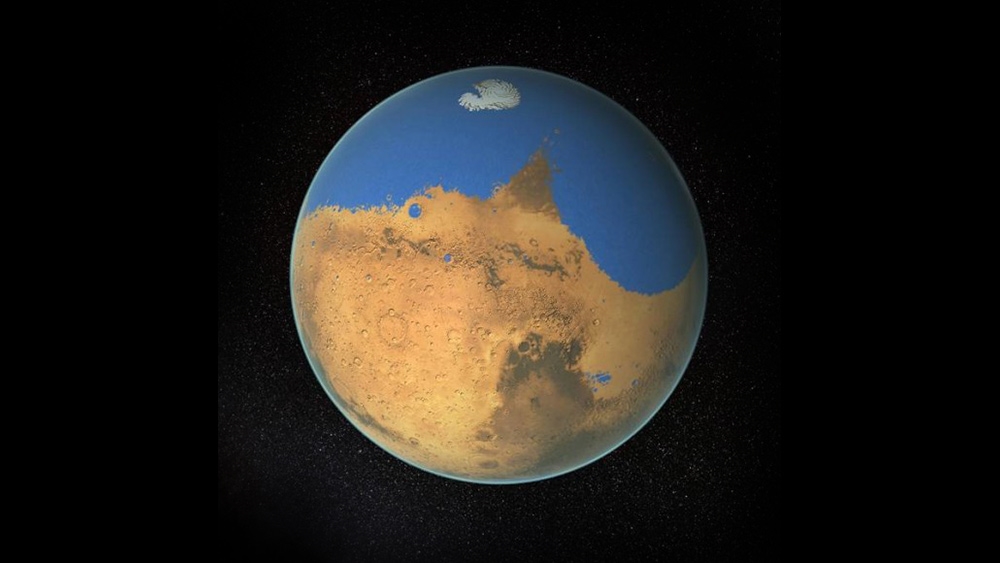Russian satellite captures unexplained “explosions of light” in Earth’s atmosphere
07/03/2019 / By Edsel Cook

Despite decades of studying space with increasingly advanced technology on the surface and in orbit, researchers continued to be baffled by space weather. The latest case involved strange bursts of intense light that took place many miles above the surface of the Earth as recorded by the Lomonosov astronomical satellite.
The flashes were not the first instance of weird space weather in the upper atmosphere. However, the Lomonosov Moscow State University (MSU) research team who operated the satellite interpreted the data as an entirely new phenomenon.
In an interview with Russian state news agency Sputnik News, the MSU researchers explained that Lomonosov detected several intense bursts of light in the upper atmosphere. The weather during that period was benign, with no sign of any storm that might be responsible for the phenomena.
“With the help of the telescope, we have obtained even more important results than we expected,” stated MSU researcher Mikhail Panasyuk, the head of the university’s Research Institute of Nuclear Physics. “It looks like we have encountered new physical phenomena.” (Related: Does cosmic rain explain climate change? Cosmic rays “rain down” through the atmosphere, influencing the weather.)
Russian astronomical satellite spots mysterious “explosions” of light
Named after the famous Russian researcher Mikhail Lomonosov and launched in 2016, the satellite was designed to look for signs of extremely energetic cosmic radiation shooting through the uppermost part of the planet’s atmosphere. Its sensor suite picked up gamma rays, charged particles in the magnetosphere, and transient light phenomena.
Panasyuk explained that Lomonosov operated at an altitude of several dozen miles over the Earth. During one of its passes, its sensors picked up a veritable explosion of light on multiple occasions.
The MSU researcher admitted that he and his team had yet to determine the exact physical characteristics of the explosions. He also discounted the possibility of planetary weather since the skies were clear at the time.
Panasyuk and his colleagues investigated short-lived incidents in the upper atmosphere to determine how space weather affected the atmosphere below and vice versa.
“We must take into account that the Earth’s radiation belts – the charged particles trapped by the magnetic field, can disappear, precipitate from the magnetic trap into the Earth’s atmosphere, producing in it extensive regions of ionization,” they posted on the Lomonosov project website. “The energy of the radiation belt particles is sufficiently high, for instance, there are relativistic electrons with energy of several MeV among them, which can penetrate deep in the atmosphere and by rate of ionization can easily compete against Auger showers.”
New space weather phenomenon doesn’t fit the usual description of “sprites”
The past few years witnessed an increasing number of strange electrical discharges in the upper atmosphere. Red sprites and blue jets comprised most of the bright flashes spotted by satellites and the International Space Station.
A red sprite is a crimson flash of electricity and light that appears over the most energetic thunderstorms. It is dimmer than most other forms of lightning and lasts very briefly.
Meanwhile, a blue jet is a massive blast of electrical energy released by the highly-charged center of a storm cloud. Assuming the shape of a cone, it shoots up from the cloud and into the upper atmosphere.
Accidentally discovered by researcher John Winckler in 1989, a sprite gets its color from the altitude. At lower levels, it looks faintly bluish. As the elevation increases, it takes on a red hue.
Both red sprites and blue jets form in the presence of a storm cloud. In comparison, the explosions of light caught by the Lomonosov satellite did not fit the description due to the clear weather at the time.
Sources include:
Tagged Under: breakthrough, cosmic rays, discovery, new discovery, Russian satellite, science and technology, Space, space weather, storms, weird science
RECENT NEWS & ARTICLES
COPYRIGHT © 2017 SPACE.COM
All content posted on this site is protected under Free Speech. Space.com is not responsible for content written by contributing authors. The information on this site is provided for educational and entertainment purposes only. It is not intended as a substitute for professional advice of any kind. Space.com assumes no responsibility for the use or misuse of this material. All trademarks, registered trademarks and service marks mentioned on this site are the property of their respective owners.

















